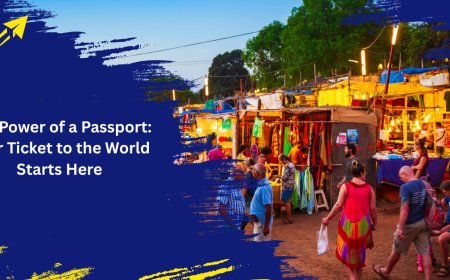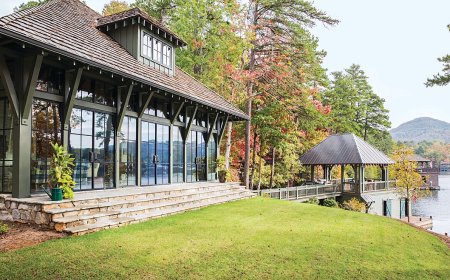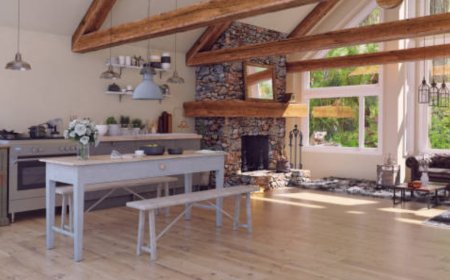How to Cycle Canal du Midi Bikes
How to Cycle Canal du Midi Bikes The Canal du Midi, a UNESCO World Heritage Site stretching 240 kilometers across southern France, is one of the most iconic and scenic cycling routes in Europe. Originally constructed in the 17th century to connect the Atlantic Ocean to the Mediterranean Sea, this engineering marvel is now a tranquil corridor of tree-lined towpaths, historic locks, vineyards, and c
How to Cycle Canal du Midi Bikes
The Canal du Midi, a UNESCO World Heritage Site stretching 240 kilometers across southern France, is one of the most iconic and scenic cycling routes in Europe. Originally constructed in the 17th century to connect the Atlantic Ocean to the Mediterranean Sea, this engineering marvel is now a tranquil corridor of tree-lined towpaths, historic locks, vineyards, and charming villages. Cycling the Canal du Midi is not merely a physical journey—it’s a cultural immersion into French rural life, architecture, and history. Whether you’re a seasoned cyclist or a leisurely rider seeking beauty over speed, this route offers an unparalleled experience. This guide provides a comprehensive, step-by-step tutorial on how to cycle the Canal du Midi, covering everything from route planning and bike selection to local etiquette and hidden gems. By the end, you’ll have all the knowledge needed to confidently plan, prepare for, and enjoy a memorable bike tour along one of the world’s most beautiful waterways.
Step-by-Step Guide
1. Understand the Route and Choose Your Segment
The Canal du Midi runs from Toulouse in the west to Sète on the Mediterranean coast. While some cyclists tackle the full 240 km, most opt for shorter, more manageable segments based on time, fitness, and interests. The route is divided into three primary sections:
- Toulouse to Castelnaudary (55 km): Ideal for beginners. This stretch features gentle terrain, fewer locks, and vibrant market towns.
- Castelnaudary to Carcassonne (45 km): The heart of the canal’s charm. Expect picturesque locks, medieval fortifications, and vineyard-lined paths.
- Carcassonne to Sète (140 km): The longest and most varied segment. Features coastal breezes, salt marshes, and the historic port of Sète.
For first-timers, we recommend starting with the Toulouse to Carcassonne leg (100 km), which can be comfortably completed in 3–4 days at a relaxed pace. This section offers the perfect blend of history, scenery, and amenities.
2. Select the Right Time of Year
The Canal du Midi is a year-round destination, but the best conditions occur between late April and early October. Spring (April–June) offers mild temperatures (18–25°C), blooming flowers, and fewer crowds. Summer (July–August) is peak season—expect higher temperatures (up to 35°C) and more tourists, but longer daylight hours and full service availability. Autumn (September–October) brings golden foliage, cooler evenings, and excellent wine harvest festivals.
Avoid November through March unless you’re an experienced winter cyclist. While the path remains open, some lock operators, bike rental shops, and cafes may be closed, and rain can make the towpath slippery.
3. Choose Your Bike
The towpath surface is generally compacted earth, gravel, or paved, making it suitable for several bike types:
- Hybrid Bikes: The most popular choice. Wide tires provide comfort on uneven surfaces, upright positioning reduces fatigue, and gears handle gentle inclines.
- Comfort or City Bikes: Ideal for casual riders. Look for models with suspension seats and ergonomic handlebars.
- Electric Bikes (E-Bikes): Highly recommended for those wanting to minimize exertion or travel longer distances. The canal’s flat profile makes e-bikes exceptionally efficient.
- Traditional Road Bikes: Not advised. Narrow tires struggle on gravel sections and can be uncomfortable over long distances.
Most cyclists rent bikes locally. Rental shops in Toulouse, Carcassonne, and Béziers offer well-maintained hybrids and e-bikes with pannier racks, locks, and basic repair kits. Expect to pay €25–€45 per day for a standard hybrid, and €50–€80 for an e-bike.
4. Plan Your Accommodation
Accommodations along the canal are abundant and varied. Options include:
- Chambres d’hôte: Family-run B&Bs offering home-cooked meals and local wine recommendations.
- Hotels and Guesthouses: Mid-range options in towns like Castelnaudary, Bram, and Lagrasse.
- Canal-side Barges: Unique overnight stays on converted houseboats with private decks.
- Camping: Several official campsites with showers and bike storage, such as Camping Le Moulin in Castelnaudary.
Book in advance during peak season (June–August). Many accommodations are within 500 meters of the towpath. Use platforms like Booking.com or France-Visites to filter by “canal view” or “bike-friendly.”
5. Pack Smart
Light packing is essential. You’ll be cycling daily, so prioritize essentials:
- Lightweight, moisture-wicking clothing (2–3 tops, 1 pair of padded cycling shorts)
- Waterproof jacket and lightweight rain cover for your panniers
- Helmet (mandatory in France for children, strongly advised for adults)
- Reusable water bottle or hydration bladder (refill stations are frequent)
- Small first-aid kit (blister pads, antiseptic wipes, pain relievers)
- Power bank for phone and GPS
- French-language phrasebook or translation app (useful in smaller villages)
- Small backpack for daily essentials (sunscreen, snacks, camera)
Most accommodations provide laundry services. Avoid overpacking—there’s no need for multiple pairs of shoes or heavy gear.
6. Navigate the Route
The Canal du Midi is well-marked with blue and white signs featuring a bicycle symbol and the canal’s logo. However, GPS navigation is highly recommended for peace of mind.
Download offline maps using:
- Komoot: Offers curated Canal du Midi cycling routes with elevation profiles and points of interest.
- Maps.me: Free offline maps with user reviews of cafes and bike repair stops.
- Google Maps: Use “bicycle” mode for towpath routing, but verify with local signage as some detours exist.
Key landmarks to watch for:
- Locks: Look for numbered locks (e.g., “Écluse 17”). Most are operated manually by lock-keepers during peak season.
- Villages: Note names like Fontrieu, Moussan, and Capestang—they’re ideal rest stops.
- Historic bridges: The Pont-Canal de Capestang and the aqueduct at Fontrieu are engineering highlights.
7. Understand Lock Procedures
The Canal du Midi has 91 locks. Most are manually operated and free to use. Here’s how to navigate them:
- Approach the lock slowly and stop at the designated waiting area.
- Wait for the lock-keeper (often in a uniform with a flag or whistle) to signal it’s your turn.
- Enter the lock chamber with your bike. Walk alongside it—do not ride through.
- Follow instructions: The lock-keeper will open or close gates to raise or lower water levels. This takes 5–15 minutes.
- When the water level matches the next section, exit carefully. Thank the operator.
Tip: Locks operate from 8:00 AM to 7:00 PM. If you arrive after hours, you may need to wait until morning. Plan your daily distance to avoid being stranded.
8. Manage Daily Distance and Pace
Average daily cycling distance: 30–40 km. This allows 3–4 hours of riding, leaving ample time for stops, meals, and exploration.
Use this sample daily schedule:
- 8:00 AM: Breakfast at accommodation
- 9:00 AM: Depart, cycle to first lock or village
- 11:00 AM: Coffee break at a canal-side café
- 12:30 PM: Lunch at a local bistro (try cassoulet or duck confit)
- 2:00 PM: Resume cycling
- 4:30 PM: Arrive at next accommodation
- 6:00 PM: Explore village, visit a wine cellar
- 8:00 PM: Dinner
Take rest days in Carcassonne (medieval citadel) or Sète (beachside port). These stops add cultural depth to your journey.
9. Interact with Locals and Respect the Environment
The Canal du Midi is a living heritage site. Locals take pride in its preservation. Practice these respectful habits:
- Do not litter. Use designated bins or carry trash until you find one.
- Stay on the towpath. Avoid trampling on private gardens or vineyards.
- Keep noise low—especially near locks and residential areas.
- Learn a few French phrases: “Bonjour,” “Merci,” “Où est la toilette?”
- Ask before photographing people or private property.
Many villages host weekly markets. Attend them for fresh fruit, cheese, and local crafts. It’s a beautiful way to connect with the culture.
Best Practices
1. Ride Early to Avoid Heat and Crowds
Mornings on the canal are serene. The air is cool, the light is soft, and the path is quiet. Starting early (before 9:00 AM) also ensures you pass through locks before midday congestion. By afternoon, the sun can be intense, especially on the open stretches between Carcassonne and Sète.
2. Hydrate and Eat Regularly
Even in mild temperatures, dehydration is a risk. Carry at least 1.5 liters of water per day. Refill at cafes, fountains, or public taps—most are marked on Komoot. Snack every 45 minutes: dried fruit, nuts, or energy bars. Local bakeries offer excellent baguettes with local cheese and charcuterie—perfect for picnic stops.
3. Use Sun Protection
The canal has long stretches with minimal shade. Apply SPF 50+ sunscreen every 2–3 hours. Wear a wide-brimmed hat, UV-blocking sunglasses, and arm sleeves. A lightweight, breathable buff can double as a neck shield.
4. Maintain Your Bike Daily
Check your tires, brakes, and chain each morning. The gravel path can wear down tires faster than expected. Carry a mini pump, spare inner tube, and tire levers. Most rental shops offer free basic maintenance—ask when you pick up your bike.
5. Carry Cash
While cards are accepted in towns, many small cafés, lock-keepers, and market stalls operate on cash. Keep €20–€50 in small bills (5, 10, and 20 euro notes) for incidental expenses.
6. Respect Wildlife and Vegetation
The canal is home to kingfishers, otters, and rare water plants. Do not feed animals. Avoid touching or picking flowers. Stay on the path to prevent erosion and protect the delicate riparian ecosystem.
7. Plan for Weather Variability
Sudden thunderstorms can roll in during summer. Always pack a compact rain jacket. If caught in heavy rain, seek shelter under a bridge or café awning. Wet towpaths can be slippery—slow down and avoid sudden turns.
8. Document Your Journey
Keep a journal or photo log. Many cyclists return home with stories of unexpected encounters: a lock-keeper sharing family history, a local chef inviting you for wine, or a sunset over the canal’s mirrored surface. These moments become the heart of your experience.
Tools and Resources
1. Official Maps and Guides
- Canal du Midi Official Tourist Guide (available at all tourist offices): Free laminated map with lock numbers, distances, and accommodation listings.
- Guide du Canal du Midi by Editions du Rove: A detailed French-language guide with historical context and walking/cycling itineraries.
- France Vélo Tourisme (www.francevelotourisme.com): Official French cycling tourism portal with route maps, safety tips, and certified bike-friendly accommodations.
2. Bike Rental Companies
- Bike & Canal (Toulouse): Offers e-bikes, child trailers, and delivery to your hotel. English-speaking staff.
- Canal du Midi Bikes (Carcassonne): Specializes in hybrid bikes with panniers and GPS devices.
- Loisirs Vélo (Sète): Provides multi-day packages including luggage transfer between stops.
3. Navigation Apps
- Komoot: Download the “Canal du Midi Cycle Route” for turn-by-turn audio guidance.
- Strava: Track your progress and compare with other cyclists’ routes.
- Windy: Free weather app for wind and rain forecasts along the route.
4. Cultural and Historical Resources
- UNESCO Canal du Midi Website: Background on the 17th-century engineering feat and its global significance.
- Musée du Canal du Midi (Castelnaudary): Small but excellent museum on the canal’s construction and operation.
- Audio Tours: Available via smartphone apps like “VoiceMap” for self-guided historical commentary at key landmarks.
5. Local Events and Festivals
- Fête du Canal (July, Béziers): Music, boat parades, and fireworks.
- Fête de la Truffe (October, Castelnaudary): Truffle market and gastronomic tastings.
- Marché aux Vins (September, Sète): Wine tasting from Languedoc vineyards.
6. Emergency and Support Contacts
While there’s no formal emergency service for cyclists, keep these numbers handy:
- 112: European emergency number (police, fire, medical)
- Local gendarmerie: Found at town halls or posted near major locks
- French Red Cross: www.croix-rouge.fr
Real Examples
Example 1: The Smith Family – A 4-Day Leisurely Ride
John and Maria Smith, aged 58 and 56, from London, rented e-bikes in Toulouse for a 4-day trip to Carcassonne. They averaged 35 km per day, staying in B&Bs with gardens overlooking the canal. They visited the lock at Fontrieu, where the keeper, an 80-year-old retired engineer, showed them original 1700s blueprints. Maria, who had not cycled since her 20s, said, “The e-bike made me feel like I was flying. The views were better than any postcard.” They ended their trip with a glass of Corbières wine on the terrace of their hotel as the sun set behind the citadel.
Example 2: Julien and Élodie – A Solo Cycling Adventure
Julien, a 32-year-old French architect, cycled the full 240 km solo over 7 days. He camped at designated sites and cooked simple meals with ingredients from local markets. He documented his journey on Instagram, focusing on the quiet moments: mist over the water at dawn, the sound of a single boat passing, the smell of lavender near the canal’s edge. His post about the lock-keeper in Capestang who gave him a homegrown peach became viral in French cycling circles. “It’s not about distance,” he wrote. “It’s about slowness. The canal teaches you to breathe again.”
Example 3: The Chen Group – A Corporate Retreat
A team of 12 from a Paris-based design firm cycled the Toulouse-to-Carcassonne stretch as a team-building retreat. They hired a private guide who organized daily picnics, wine tastings, and historical talks. Each evening, they gathered for a group reflection. “We left our laptops behind,” said team lead Sophie. “For the first time in years, we talked—not about deadlines, but about childhood memories, dreams, and why we love what we do.”
Example 4: A Solo Cyclist with a Disability
Amelia, a 45-year-old from Canada with limited mobility, used a hand-crank trike to complete the Canal du Midi. The towpath’s gentle gradient and smooth surfaces made it accessible. She partnered with a local nonprofit, “Cycling Without Borders,” which arranged adaptive equipment and accessible accommodations. “The canal didn’t care that I moved differently,” she said. “It welcomed me just the same.”
FAQs
Is the Canal du Midi safe for solo cyclists?
Yes. The route is exceptionally safe. The towpath is separated from vehicle traffic, and villages are frequent. Crime is rare. Many solo cyclists, including women, complete the journey without incident. Trust your instincts, lock your bike at night, and stay in well-lit areas after dark.
Can I bring my own bike on a train to start the route?
Yes. SNCF (French national rail) allows bicycles on most regional trains (TER) for a small fee (€5–€10). Bikes must be tagged and stored in designated areas. Book ahead during peak season.
Are there bike repair shops along the route?
Yes. Major towns like Toulouse, Castelnaudary, Carcassonne, and Béziers have full-service bike shops. Smaller villages often have one mechanic who can fix flats or adjust brakes. Ask at your accommodation—they’ll know who to call.
Do I need to speak French?
No, but basic phrases help. Many staff in tourist areas speak English. In smaller villages, a smile and “Bonjour” go a long way. Translation apps work well for menus and signs.
Can children cycle the Canal du Midi?
Absolutely. Children as young as 8 can ride the easier segments with a trailer or tag-along bike. E-bikes make it easier for families. Many B&Bs offer child-sized helmets and bike seats.
Is the canal crowded with boats?
Boat traffic is moderate during peak season (June–August), especially near Carcassonne and Béziers. Most boats are slow-moving pleasure craft. Give them space at locks and bridges. The path is wide enough to pass safely.
Can I cycle the route in reverse—from Sète to Toulouse?
Yes. The terrain is flat in both directions. Many prefer the west-to-east route for the sense of progression toward the sea. But cycling east-to-west allows you to finish in Toulouse, a vibrant city with excellent transport links.
What’s the best way to store luggage between stops?
Most accommodations offer secure bike storage and luggage holding. For multi-day trips, consider a luggage transfer service like “Canal du Midi Luggage Transfer” (€15–€25 per bag per day). They collect your bags in the morning and deliver them to your next stop by evening.
Are there public toilets along the canal?
Yes. Most locks, villages, and cafés have public restrooms. Some require a small fee (€0.50–€1). Carry tissues and hand sanitizer. Many B&Bs allow guests to use their facilities.
What if I get lost?
Stay calm. The canal is linear—there’s only one direction to go. Look for blue-and-white signs. Ask at a café or shop. Locals are proud of the canal and happy to help. Use your GPS app’s “recalculate” feature.
Conclusion
Cycling the Canal du Midi is more than a physical journey—it’s a pilgrimage through time, nature, and culture. Unlike high-speed bike tours through mountain passes or urban trails, this route invites you to slow down, observe, and connect. The gentle rhythm of the water, the whisper of leaves above you, the laughter from a riverside terrace—it all combines into an experience that lingers long after your wheels have stopped turning.
By following the steps outlined in this guide—selecting the right segment, choosing appropriate gear, respecting the environment, and embracing the rhythm of the canal—you’ll not only complete the ride, but you’ll carry its spirit with you. Whether you’re a history buff, a nature lover, a foodie, or simply someone seeking peace away from the noise of modern life, the Canal du Midi offers a rare gift: the chance to travel slowly, deeply, and meaningfully.
So pack your bags, charge your e-bike, and set off on a path that has drawn travelers for over 300 years. The water is calm. The locks are waiting. And the sun, as it always does, will rise over the canal, ready to guide you forward.





































